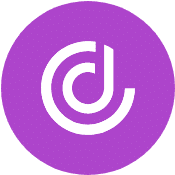Entitlements
Table of Contents
Table of Contents
What are Entitlements?
In a business context, “entitlements” are the rights or permissions granted to users or organizations to access specific resources, products, or services. They can be part of subscription plans, software licensing, digital content, or other service offerings. You’ll find them primarily in software, telecom, and service-based industries.
Entitlements are a crucial element in modern subscription and usage-based business models, where businesses monetize different tiers of access through upselling and cross-selling. Since customers can only access features within their respective plans, entitlements effectively control their experience with the company’s products and services.
Synonyms
- Customer entitlements
- User entitlements
- SaaS entitlements
- Software entitlements
Understanding the Concept of Entitlements
If you use tiered pricing or sell different packages, a user pays for a certain tier based on their needs. When they purchase or subscribe to that tier, they’re ‘entitled’ to access all the features within that tier/package, but none outside of it. In other words, entitlements ensure customers only access what they pay for — no more, no less.
There are several different kinds of entitlements, though:
1. Software entitlements
Software entitlements are exactly what they sound like: the rights to use a specific software product. In this case, it can refer to stand-alone software or cloud-based software customers access through subscriptions.
These include:
- Feature-based entitlements: These allow access to specific software functionalities based on a subscription or license. For example, certain software plans may unlock advanced features only available to premium users.
- Usage-based entitlements: These are linked to the extent or volume of software usage, such as a limit on the number of installations, API calls, or transactions a customer can make per month.
- User access rights: These define what users are allowed to do within an application, such as viewing, editing, or deleting data. They’re normally tied to user roles like “admin,” “manager,” or “regular user.”
For SaaS products, another important consideration is static vs. dynamic entitlements. Static entitlements are assigned once (based on a user’s role), while dynamic entitlements change in real-time based on contextual information such as location or risk factors (like unusual activity).
2. Service entitlements
These are tied to the level of service a customer is entitled to receive, often in support agreements or service-level agreements (SLAs). For example, a customer might be entitled to receive 24/7 support based on their premium subscription level.
Service-based entitlements inlcude the following:
- Support entitlements: You probably offer email, chat, or phone support to your clients as part of your service package. For enterprise customers, you probably offer priority service or a dedicated account manager. These outline the level of support a customer is entitled to receive.
- Response and resolution times: These define how quickly a customer can expect a response or resolution to their issue. For example, you might guarantee that all support requests will be responded to within 24 hours.
- Geographic or business activity limitations: Some services are entitled only to specific regions or industries, restricting usage based on geographic location or the type of business.
For SaaS contracts and certain types of reseller agreements and outsourcing deals, you’ll also have service-level agreements (SLAs). SLAs are agreements between a service provider and customer that outline the expectations for performance and support.
Software vendors, for instance, your SLA will include things like uptime guarantees, data backup policies, and support response times.
3. Employee entitlements
Employees are entitled to certain rights, benefits, and privileges when they work for you full-time. That includes things like salary, vacation time, insurance coverage, paid or unpaid leave (e.g., annual, sick, or parental leave), and access to company resources.
Some of these are mandated by local labor laws. Others are at your discretion.
For instance, you’re required by US law to offer 12 weeks of unpaid leave to your sales reps (and all other full-time team memebrs) for family or medical reasons. But you will independently develop your sales compensation plan and set your OTE.
4. Digital product entitlements
With digital content like eBooks, music, and video streaming services, users have entitlements through subscription or purchase. Similar to a software entitlement, this grants them access to the content on specified platforms or devices, or to use within certain parameters.
5. Compliance entitlements
License compliance is the process of ensuring that licensed software and services are used within the terms defined by law and licensing agreements. It prevents misuse and mitigates the risk of penalties.
Compliance entitlements outline usage parameters and restrictions for a specific software application.
For example, Netflix’s entitlements allow you to stream their content on up to a certain number of screens at once, but not more than that. And you can’t redistribute the content you bought access to.
Importance of Entitlements for SaaS Monetization
In the SaaS world, defining what users can and can’t use within your software is Step #1. It’s a critical part of how you segment your customers, deliver the right service to each user, and push upsells/cross-sells.
Let’s say you have three versions of your product: a freemium, pro, and enterprise version.
- In the freemium version, you need customers to have extremely limited access. You can’t give away too much value for free to users who don’t need it. And for those who do need it, the sole purpose of the freemium offer is so they can familiarize themselves with the tool. You want its limitations to push them to convert.
- Your pro-level product will have enough features for most poeple. They’re paying for access to the features they need, but they can’t put strain on your resources by accessing advanced features and benefits (e.g., dedicated account managers, unlimited storage).
- Your enterprise product has tons of features only your biggest customers will need. They’re high-value deals but they also cost more to maintain, so you need to ensure you’re paid for everything you deliver. You also want to make sure these customers stay with you over time, and they’re only interested in pushing their business forward.
- If you’re using usage-based pricing, entitlements determine when you can charge for what. It allows you to limit access (e.g., a certain number of users, data storage). Once subscribers hit those thresholds, you can either begin charging more or cut off access.
- With feature-based offers, you can package different products based on their functionalities. Here, your feature entitlements are what define the differences between packages. You might sell accounting software in addition to billing and invoicing. Some will pay for the accounting features while others will be fine with just billing and invoicing.
At every level, entitlements are what define the value you offer and set expectations for both your customers and your own internal operations. They differentiate between product tiers, align your offer with different ICPs, ensure compliance, and drive monetization.
How to Manage Software License Entitlements
Managing entitlements can be difficult because, generally, complex rules and conditions apply. For instance, if you offer different levels of support to customers based on their license type, entitlements need to reflect that. But so do your internal operations — you need to have the infrastructure to support it.
Effective software entitlement management requires the following steps:
1. Establish clear entitlement definitions.
Clearly define what each license type, subscription tier, or service level includes and excludes. Make sure this is easily communicated to customers.
It helps to communicate the basics in bullet points on your pricing page. Internally, you should also have an entitlements matrix clarifying what each version of your product includes. That way, you can standardize it across your organization, and you have a clear offer for everyone.
For complex deals, part of navigating the enterprise sales process has to be clarifying the rights and restrictions in your contracts. You’ll need to define what’s negotiable and non-negotiable and clarify that with your deal desk.
2. Automate entitlement tracking.
A license management system can help you track entitlements, subscribers’ usage of your product, and when they’ve exhausted their entitlements. You can also use it to notify customers when they’re approaching their usage limits.
The system will integrate directly with the product itself. When you have the infrastructure in place, it will automate your license enforcement and make sure every user gets exactly the value they’re paying for.
3. Add your entitlements to your CPQ and contracting software.
Entitlements play a major role in your overarching sales process. You need to connect these rules to the different products and packages in your CPQ (configure, price, quote) system. That way, when your reps go through the quoting process, each proposal accurately relflects what each subscriber will get from their plan.
You also need to input them in your contract management software. It needs to automatically apply the right entitlements to every contract you generate. This will streamline negotiations and guarnatee your customers receive the correct terms.
4. Align your pricing strategies with levels of usage and access.
At every step, you need to align your pricing with your product value. You have to strategically separate features and benefits in a way that allows you to charge more for higher levels of usage, without offering too much, too little, or the wrong kind of value in each tier.
A basic rule of thumb is that your core product features need to be available in all tiers. For a CRM, that would be the ability to store and manage customer data. You can then charge more for extra features, like automation, AI features, and integrations.
People Also Ask
What is the difference between a software license and an entitlement?
A software license is a legal agreement that grants the right to use a specific piece of software under defined terms, like the number of users, installations, or devices the user can deploy it on. An entitlement specifies precisely which features or capabilities they can access within that software. This is dictated by their subscription level or role.
While a license determines general usage rights, entitlements focus on the specific permissions or access levels tied to individual users or plans — for instance, access to premium features in a premium plan.
How does software entitlement improve customer retention?
For subscription models, entitlements give customers transparency into what they’re paying for and what they can expect from your product. It’s a clear indicator of value, and if you deliver on your promises, subscribers are more likely to renew their subscriptions.
Entitlements also allow you to track usage and ensure that each customer receives the appropriate level of service. This prevents them from overpaying or underutilizing the tool. When the value you deliver is correctly aligned with what they pay for, your customers are happier overall.



